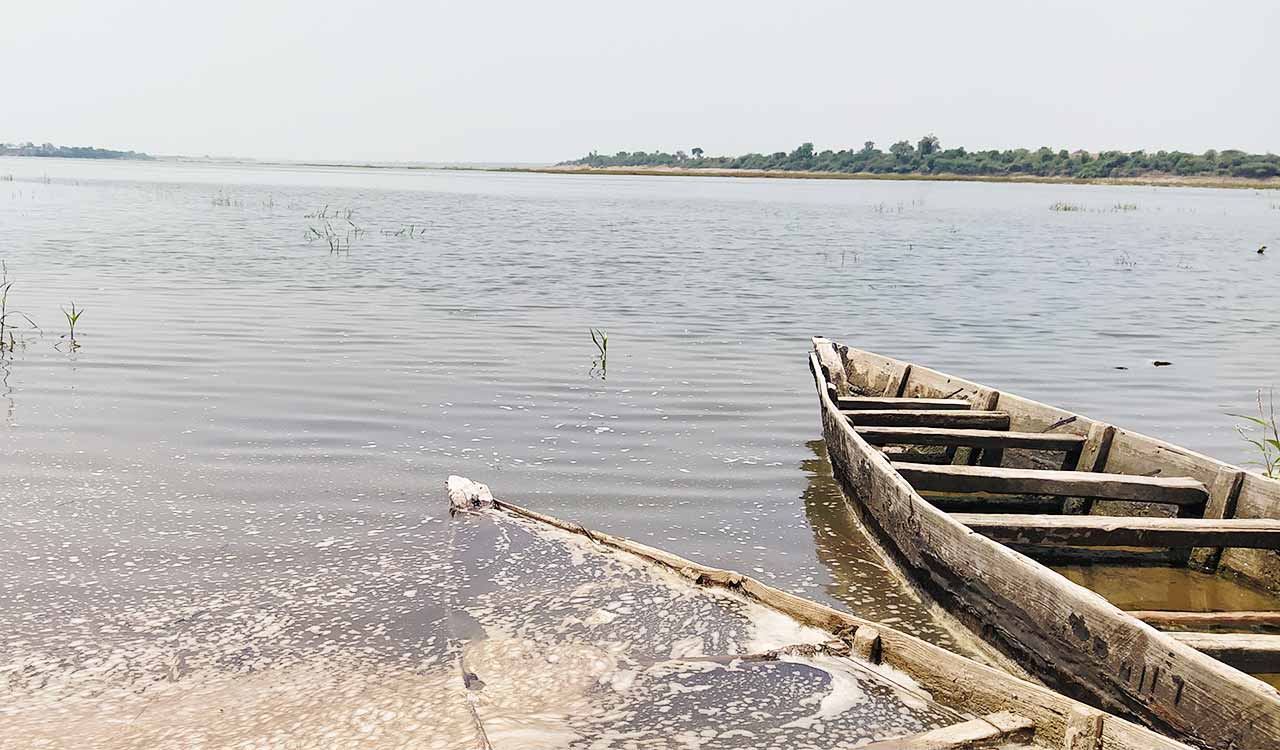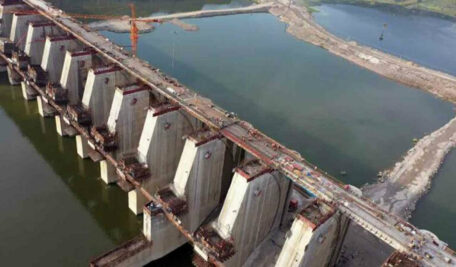Telangana: Deepening pollution crisis in Godavari threatens lives, livelihoods

Factories releasing untreated effluents, sewage discharge, encroachments add to the problem
Published Date – 13 May 2025, 11:59 PM

Hyderabad: Godavari river, India’s second-longest and lifeline for all major southern States, is facing increasing pollution levels. The impact is more in Telangana. A recent study conducted by the Indian Institute of Technology (IIT) Hyderabad and CSIR-NEERI has identified several critically affected regions where industrial effluents and sewage discharge threaten both aquatic ecosystems and human health.
Pollution in Telangana’s stretch of the Godavari has reached alarming levels, particularly in Adilabad, Karimnagar, Warangal, and Khammam districts. Factories and public sector units in these areas continue to release untreated effluents directly into the river, contributing to high Biochemical Oxygen Demand levels. The pollution problem is particularly evident in Bhadrachalam, where river water has often turned black, emitting a pungent smell due to chemical and sewage contamination.
Urbanisation and unchecked encroachments along the banks have also led to increased pollution. It is added to the deforestation all along the river course. So is the case with its main tributaries like Pranahita and Indravati. Huge built-up of sediment and degradation of water quality is affecting life. Several clusters of villages relying on the river for daily needs have reported an uptick in health issues, including skin allergies and gastrointestinal diseases.

The industries violating pollution norms continue to have their way as the enforcement mechanism remains weak. Despite repeated warnings, the illegal discharges by them have been adding to the problem.
Maharashtra’s organic waste and heavy metal contamination
Moving upstream, Maharashtra’s 300 km stretch from Nashik to Paithan has shown some of the highest levels of organic pollution in recent assessments. Water samples collected along this route indicate dangerously high Biochemical Oxygen Demand levels, severely depleting oxygen levels and threatening aquatic life.
Agricultural runoff has also become another major contributor to pollution, as fertilizers and pesticides from fields near Nashik and Nanded flow directly into the river without filtration.
Heavy metal contamination, particularly in parts of Aurangabad and Paithan, has revealed excessive levels of iron, zinc, nickel, and copper, exceeding permissible limits for safe drinking water. Critically high BOD levels in the 300-km stretch from Nashik to Paithan (Maharashtra) were identified. They are ranging from 6–36 mg/L. The permissible limit for drinking water is 3 mg/L (BIS standards), and levels above 6 mg/L indicate severe pollution unfit for aquatic ecosystems.
The impact on fisheries is severe. Fishermen resent their dwindling fortunes as their incomes are falling in proportion to their catches because of the massive waste accumulation. Locals also complain about foul-smelling water, deterring pilgrims and tourists visiting religious sites near the river.
AP – Most polluted stretches identified
The pollution crisis intensifies in Andhra Pradesh, particularly from Rajamahendravaram to the Dowleswaram Barrage, identified as one of the most polluted river segments in India. Algal blooms, aquatic weeds, and untreated wastewater have drastically altered the river’s natural state.
The National Green Tribunal has launched an investigation into allegations of illegal municipal waste dumping in Narsapur, further aggravating pollution levels. Meanwhile, large-scale infrastructure projects, including the Polavaram Project, have led to stagnant water pools that trap pollutants instead of flushing them downstream.
Despite past efforts like the National River Conservation Plan, pollution levels have remained high all along due to inconsistent enforcement and a lack of coordinated efforts from the administration in the riparian states.
Jal Shakti initiative
As the environmentalists stress the need for stricter regulations, sustainable agriculture practices, and improved sewage treatment infrastructure to combat pollution in Telangana, Maharashtra, and Andhra Pradesh, the Ministry of Jal Shakti has initiated a three-year study in partnership with NEERI to develop a long-term management strategy for the river. The study which is focusing on developing a management strategy and formulation of a comprehensive plan for the river’s rejuvenation, is in its early phases, given its three-year timeline spanning 2025–2028.






